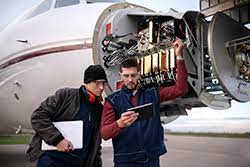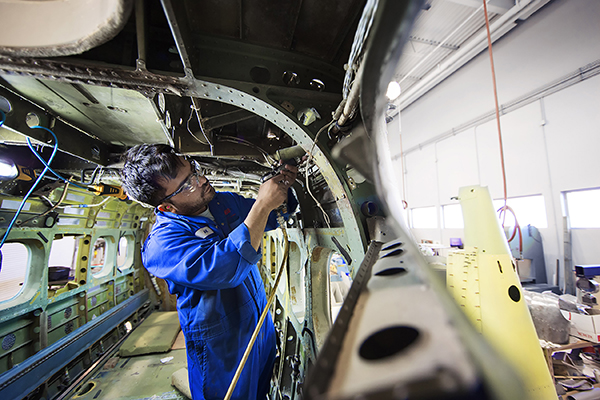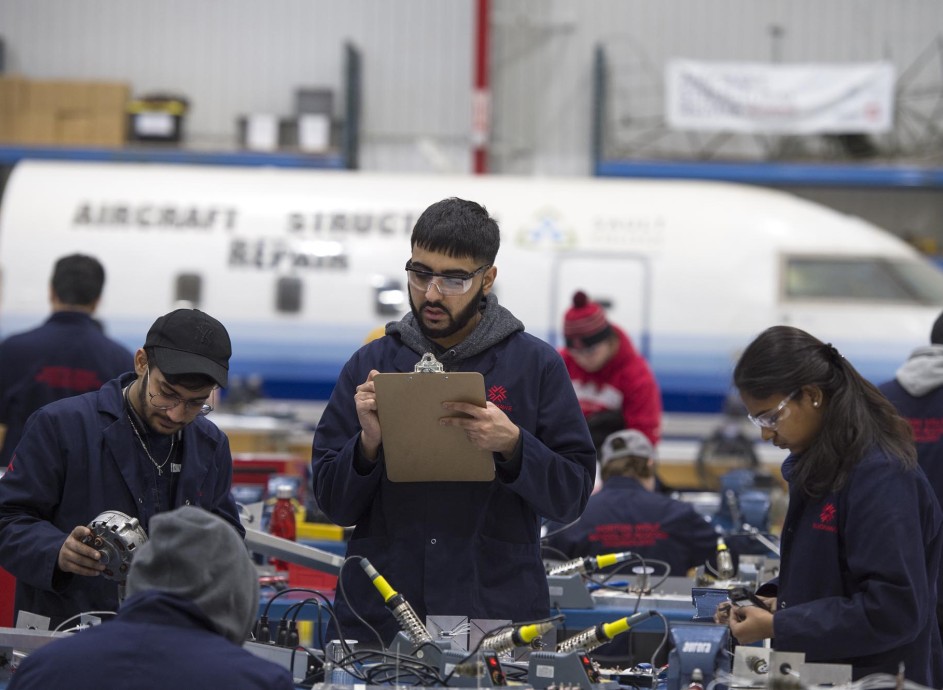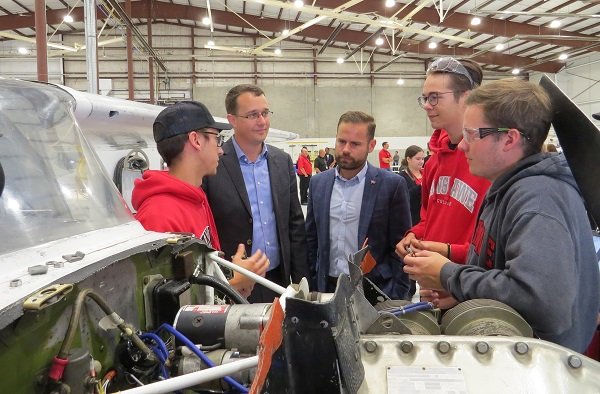|
You need to know and understand how to: SA1. complete accurate well written work with attention to detail SA2. communicate with others in writing.
Reading Skills
You need to know and understand how to:
SA3. follow guidelines, procedures, rules and service level agreements
Oral Communication (Listening and Speaking skills)
You need to know and understand how to:
SA4. listen effectively and orally communicate information accurately
SA5. ask for clarification and advice from others
Professional Skills
Decision Making
You need to know and understand how to:
SB1. identify anomalies in data
SB2. make a decision on a suitable course of action
SB3. time management
SB4. multi-tasking
Plan and Organise
You need to know and understand how to:
SB5. plan and organize your work to achieve targets and deadlines
SB6. manage your time effectively
SB7. handle multiple tasks concurrently
Customer Centricity
You need to know and understand how to:
SB8. check that your own and/or your peers’ work meets customer requirements
SB9. work effectively in a customer facing environment
SB10. build and maintain positive and effective relationships with customers
Problem Solving:
You need to know and understand how to:
SB11. seek clarification on problems from others
SB12. apply problem-solving approaches in different situations
SB13. refer anomalies to the line manager
Analytical Skills
You need to know and understand how to:
SB14. analyze data and activities
SB15. configure data and disseminate relevant information to others
SB16. pass on relevant information to others
Critical Thinking Skills
You need to know and understand how to:
SB17. provide opinions on work in a detailed and constructive way
SB18. apply balanced judgments to different situations
Attention to Detail
You need to know and understand how to:
SB19. check your work is complete and free from errors
SB20. get your work checked by others
Team Working
You need to know and understand how to:
SB21. work independently and collaboratively
SB22. work effectively in a team environment
SB23. contribute to the quality of team working
Technical Skills
SC1. use information technology effectively to input and/or extract data accurately
SC2. identify and refer anomalies in data
SC3. store and retrieve information
SC4. keep data secure
SC5. agree objectives and work requirements
SC6. use coding standards
SC7. keep up to date with changes, procedures and practices in your role

Work effectively in a team
Performance Criteria
Support the work team
PC1. display courteous and helpful behaviour at all times
PC2. take opportunities to enhance the level of assistance offered to colleagues
PC3. meet all reasonable requests for assistance within acceptable workplace timeframes
PC4. complete allocated tasks as assigned
PC5. seek assistance when difficulties arise
PC6. use questioning techniques to clarify instructions or responsibilities,
PC7. identify and display a non-discriminatory attitude in all contacts with customers and other staff members
Maintain personal presentation
PC8. observe appropriate dress code and presentation as required by the workplace, job role and level of customer contact
PC9. follow personal hygiene procedures according to organisational policy
Develop effective work habits
PC10. interpret, confirm and act on workplace information, instructions and procedures relevant to the particular task
PC11. interpret, confirm and act on legal requirements with regards to anti- discrimination, sexual harassment and bullying
PC12. ask questions to seek and clarify workplace information
PC13. plan and organise daily work routine within the scope of the job role
PC14. prioritise and complete tasks according to required timeframes
PC15. identify work and personal priorities and achieve a balance between competing priorities
Knowledge and Understanding
Organisational Context
KA1. policies and procedures relating to the job role
KA2. the value system of the organisation
KA3. employee rights and obligations
KA4. the reporting hierarchy and escalation matrix
Technical Knowledge
KB1. ask questions to identify and confirm requirements
KB2. follow routine instructions through clear and direct communication
KB3. use language and concepts appropriate to cultural differences
KB4. use and interpret non-verbal communication
KB5. the scope of information or materials required within the parameters of the job role
KB6. consequences of poor team participation on job outcomes KB7. work health and safety requirements
Core Skills/ Generic Skills
Writing Skills,
On the job the individual needs to be able to: SA1. complete documentation accurately
SA2. write simple reports when required
Reading Skills
On the job the individual needs to be able to: SA3. read information accurately
SA4. read and interpret data sheets
Oral Communication (Listening and Speaking skills)
The user/individual on the job needs to know and understand how to:
SA5. listen to and orally communicate information with all concerned
Professional Skills
Decision Making
On the job the individual needs to be able to:
SB1. make appropriate decisions regarding the responsibilities of the job role
Plan and Organise
The user/individual on the job needs to know and understand how to:
SB2. monitor efficient functioning of all activities
SB3. plan and organise work to achieve targets and deadlines
Customer Centricity
The user/individual on the job needs to know and understand how to:
SB4. communicate with customers and other stakeholders in a courteous manner
SB5. maintain effective work relationship
Problem Solving
The user/individual on the job needs to know and understand how to:
SB6. identify trends/common causes for errors and suggest possible solutions to the supervisor / management
SB7. identify and correct errors
Analytic al Thinking
The user/individual on the job needs to know and understand how to:
SB8. analyse best possible solutions (cost, time, effort, etc.) suited for operations
Critical Thinking
The user/individual on the job needs to know and understand how to:
SB9. concentrate on task at hand and complete it without errors
SB10. apply balanced judgments to different situations

Organisational safety and information secu rity
Performance Criteria
Comprehending the safety and information security procedures
PC1. comply with your organization’s IT policies and procedures for safety of data and information
PC2. adhere to the organisation’s policies pertaining to accesses granted, usage, modification of any information or recording or destruction of information
PC3. report any identified breaches of data or information in any form to the authority as described by the organisation
PC4. report any theft of intellectual property according to the organisation policy
PC5. record, control the document version and take appropriate approvals for the documents, plans or drawings according to organisational hierarchy
PC6. follow your organization’s safety procedures at workplace and act promptly, calmly, and efficiently in case of disruption
PC7. recommend improvement related to safety and security at the workplace
PC8. comply to any health and safety requirements set by an organisation
Knowledge and Understanding
Organisational Context
KA1. regulatory requirements and organization’s procedures for health, safety and information security
KA2. what is meant by an Intellectual property (IP), including the identification and prevention of theft at workplace
KA3. how and when to maintain version and document control, post seeking approvals from the competent organisational authority
KA4. the 5S principles (Seiri, Seiton, Seiso, Seiketsu, and Shitsuke) for efficient productivity and quality at workplace
Technical Knowledge
KB1. IP management, including filing patents/copyrights/design registrations, documentation and control
KB2. design standards, practices, procedure and methods followed by your organisation
KB3. how to report breaches in safety and information security
KB4. cyber security policy of your organisation
KB5. procedures for evacuation of staff at workplace
KB6. reporting procedures related to health, safety and security
Core Skills/ Generic Skills
Writing Skills
You need to know and understand how to:
SA1. complete accurate, well written work with attention to detail
Reading Skills
You need to know and understand how to:
SA2. read instructions, guidelines, procedures, rules and service level agreements
Oral Communication (Listening and Speaking skills)
You need to know and understand how to:
SA3. listen effectively and orally communicate information accurately
Professional Skills
Decision Making
You need to know and understand how to:
SB1. make a decision on a suitable course of action
Plan and Organise
You need to know and understand how to:
SB2. plan and organize your work to meet health, safety and security requirements
Customer Centricity
You need to know and understand how to:
SB3. build and maintain positive and effective relationships with colleagues and customers
Problem Solving
You need to know and understand how to:
SB4. apply problem solving approaches in different situations
Analytical Skills
You need to know and understand how to:
SB5. analyse data and activities
Critical Thinking Skills
You need to know and understand how to:
SB6. apply balanced judgments to different situations
Create simple mechanical designs
Performance Criteria
PC1. establish your role and responsibilities in creating mechanical designs
PC2. establish the design requirements and constraints
PC3. use standard design tools to create multiple design concepts that comply with the design requirements and constraints
PC4. analyse design concepts to identify best fit with the design requirements and constraints
PC5. present your design concepts and recommendations to appropriate people
PC6. incorporate inputs from appropriate people in finalized design concepts
PC7. carry out DfX/ DFMA/ Stack-up analysis on the finalized design concepts and make amendments, where required
PC8. obtain approval of finalized design concepts from appropriate people
PC9. create engineering documents for manufacturing and bills of materials (BOMs) for finalized designs
PC10. obtain advice and guidance on creating mechanical designs from appropriate people, where required
PC11. comply with your organization’s policies, standards, procedures and guidelines when creating mechanical designs
Knowledge and Understanding
Organisational
Context
KA1. your organization’s policies and procedures for creating mechanical designs
and your role and responsibilities in relation to this
KA2. objectives and scope of work to be carried out and the importance of keeping
within these boundaries
KA3. basic manufacturing methods for mechanical designs and how to apply these
KA4. specific industry design standards and the importance of using these
KA5. how to use Microsoft office tools
KA6. how to present your designs
KA7. who you may need to involve to provide feedback to your designs
KA8. the importance of collating feedback on your designs
KA9. how to analyze and use feedback to improve your designs
KA10. your organization’s approval process for mechanical designs
KA11. where to obtain advice and guidance on mechanical designs

Technical
Knowledge
KB1. different sources of information and methodologies available for mechanical
designs and how to access these
KB2. applied mechanics in practice
KB3. different types of simple mechanical designs and how they can be used
KB4. constraints that may apply to mechanical designs and the impact these may
have on designs
KB5. different types of design tools and how to use these
KB6. different strengths of materials you will be working with and the importance
of this
KB7. the purpose and importance of geometrical dimensioning and tolerance
(GD&T) and how this applies to mechanical designs
KB8. the importance of design materials, DFX analysis and how to do this
KB9. how to create detailed drawings for mechanical designs
KB10. how to prepare bills of materials (BOMs)
KB11. industry design tools and how to use these, including;
Auto desk Inventor, Solid works, etc.
CATIA
PRoE/ CreO
NX
MCADKB12. problems that may occur with mechanical designs and how to address these
KB13. current practice for creating mechanical designs
KB14. knowledge of mechanical equipment, computer hardware and software
Core Skills/ Generic Skills
Writing Skills</st rong>
You need to know and understand how to:
SA1. communicate with colleagues in writing
Reading Skills
You need to know and understand how to:
SA2. follow instructions, guidelines, procedures, rules
Oral Communication (Listening and Speaking skills)
You need to know and understand how to:
SA3. listen effectively and orally communicate information
Professional Skills
Decision Making
You need to know and understand how to:
SB1. make a decision on a suitable course of action< br>SB2. identify anomalies in data
SB3. ask for clarification and advice from others
Plan and Organise
You need to know and understand how to:
SB4. plan and organize your work to achieve targets and deadline
Customer Centricity
You need to know and understand how to:
SB5. check that your own work meets customer requirements
Problem Solving:
You need to know and understand how to:
SB6. apply problem-solving approaches in different situations
SB7. refer anomalies to the line manager
Analytical Skills
You need to know and understand how to:
SB8. analyze data and activities
Critical Thinking Skills
You need to know and understand how to:
SB9. apply balanced judgments to different situations
Attention to Detail
You need to know and understand how to:
SB10. check your work is complete and free from errors
Team Working
You need to know and understand how to:
SB11. work effectively in a team environment
Technical Skills
SC1. agree objectives and work requirements
SC2. use information technology effectively to input and/or extract data accurately
SC3. store and retrieve information
SC4. keep up to date with changes, procedures and practices in your area of expertise
SC5. read, understand & analyze the technical requirements as stated in the
project specification and Check lists
SC6. design and optimise components and assemblies for a given product / project
specifications
SC7. carry out stack up analysis and tolerance analysis at part and assembly levels.
SC8. develop manufacturing drawings in accordance with applicable standards
including GD&T
SC9. read and interpret blueprints, technical drawings, schematics, and computer generated reports
SC10. confer with system engineers and other personnel to implement operating
procedures, resolve system and interface challenges, and provide technical
information
SC11. participate in peer reviews
SC12. research and analyze customer design proposals, specifications, manuals, and
other data to evaluate the feasibility, cost, and maintenance requirements of
designs or applications
SC13. specify system components or direct modification of products to ensure
conformance with engineering design and performance specifications

Design of aerospace structural components/ assemblies/subassemblies
Performance Criteria
Design and develop aerospace structural components/ assemblies/ subassemblies
review customer requirements
PC2. conceptualise preliminary & detail design, qualify, and document aircraft structural components
PC3. apprehend the applicable structural standards for an aircraft
PC4. select appropriate usage of metallic, non-metallic and composites material while designing structures
PC5. design for appropriate aircraft loads
PC6. design primary and secondary structures by using appropriate design and software tool
PC7. work with respective designers and structural analysis engineers for design optimisation
PC8. carryout detail design for the developed structural component
PC9. oversee work by in-house and contract designers and analysts
PC10. document and maintain the basis of design and selection of appropriate structure
PC11. Create / modify 3D models, sub-assemblies, assemblies, manufacturing drawings single part, assembly, installation and obtain approvals from appropriate design authority
PC12. work within the aircraft design modification team(s), to assist with the generation of design documentation and drawings, and interface with the customer on required changes
PC13. conform to configuration management and change control procedures and policies
PC14. conduct/participate in design reviews and customer audits
PC15. interact with internal and external customers to present design development outputs
PC16. co-ordinate within the team and effectively communicate with all levels of the organization
PC17. create / modify Bill of Material (BOM), weight report, change note etc
PC18. develop composite models & drawings with MEOP (manufacturing edge of part) & EEOP ( Engineering edge of parts)
PC19. release manufacturing drawings based on approved design
Knowledge and Understanding
Organisational Context
KA1. organisation’s objective, vision, diversified segments, products etc
KA2. regulatory compliance with respect to structural modification and changes
KA3. organisation’s requirement for IP protection
KA4. hazard and risk management as defined by organisation
KA5. compliance requirement for the roles and responsibility
KA6. organisation’s safety and security requirements
Technical Knowledge
KB1. aircraft construction and functionality for civil and military transport
KB2. aircraft load, characteristics and performance
KB3. flight operations / mission profile
KB4. loads-supported, material, design history, best design practices and failure modes for skin, stringers, frames, floor beams and panels, intercostal, cross beams bulk heads, keel beam and empennage.
KB5. loads, load path and Free Body Diagram (FBD) in moderately complex situations
KB6. Advanced solid mechanics: shear flow (applied to panels with cut-outs), shear centre, asymmetric bending, torsional buckling, flexural- torsional buckling, warping of beam sections, winger beam theory, tension-shear interaction, shear -compression interaction. Limit post buckling
KB7. cut-outs in doors, fuselage etc. and design best practices, standards, codes, certifications and policy
KB8. basic analysis of joints – riveted and bolted joints design and best practices
KB9. Hand calculations: floor beam design, prying analysis of bolted joint, bulk head analysis, critical joint analysis
KB10. elements of composite manufacture and composite bolted joint fundamentals
KB11. composite mechanics and failure theories, composite ply book keeping and best practices
KB12. corrosion issues with monolithic and sandwich structures
KB13. industrial software
KB14. principles of aerospace structural design, strength of material, CFD and thermodynamics.
KB15. Design for Manufacturing (DFM)
Core Skills/ Generic Skills
Writing Skills
The user/individual on the job needs to know and understand how to:
SA1. complete accurately, a well written report, in the English language detailing situations of emergency with attention to detail
Reading Skills
The user/individual on the job needs to know and understand how to:
SA2. read instructions/guidelines/procedures/rules
Oral Communication (Listening and Speaking skills)
The user/individual on the job needs to know and understand how to:
SA3. listen to and orally communicate information with all concerned
Professional Skills
Decision Making
The user/individual on the job needs to know and understand how to:
SB1. make decisions on a suitable course of action or response if permitted by the authority matrix
Plan and Organise
The user/individual on the job needs to know and understand how to: SB2. monitor efficient functioning of all activities
SB3. plan and organise work to achieve targets and deadlines
Customer Centricity
The user/individual on the job needs to know and understand how to: SB4. communicate with customers and other stakeholders in a courteous manner
SB5. maintain cordial work relationship
Problem Solving
The user/individual on the job needs to know and understand how to:
SB6. identify trends/common causes for errors and suggest possible solutions to the supervisor/management
SB7. identify and correct errors
Analytical Skills
The user/individual on the job needs to know and understand how to:
SB8. analyse best possible solutions (cost, time, effort, etc.) suited for operations
Critical Thinking Skills
The user/individual on the job needs to know and understand how to:
SB9. concentrate on task at hand and complete it without errors
SB10. apply balanced judgments to different situations
Model Curriculum
Aerospace Structural Engineer
Elective 1: Designer) (Elective 2: Analyst
Create documents for knowledge sharing
establish with appropriate people the purpose, scope, formats and target audience for the documents
access existing documents, language standards, templates and documentation tools from your organization’s knowledge base
liaise with appropriate people to obtain and verify the information required for the documents
confirm the content and structure of the documents with appropriate people
create documents using standard templates and agreed language standards
review documents with appropriate people and incorporate their inputs
submit documents for approval by appropriate people
publish documents in agreed formats
update your organization’s knowledge base with the documents
comply with your organization’s policies, procedures and guidelines when creating documents for knowledge sharing
Work Effectively in a Team
display courteous and helpful behaviour at all times
take opportunities to enhance the level of assistance offered to colleagues
meet all reasonable requests for assistance within acceptable workplace timeframes
complete allocated tasks as assigned
seek assistance when difficulties arise
use questioning techniques to clarify instructions or responsibilities,
identify and display a non discriminatory attitude in all contacts with customers and other staff members
observe appropriate dress code and presentation as required by the
workplace, job role and level of customer contact
follow personal hygiene procedures according to organisational policy
interpret, confirm and act on workplace information, instructions and procedures relevant to the particular task
interpret, confirm and act on legal requirements with regards to anti-discrimination, sexual harassment and bullying
ask questions to seek and clarify workplace information
plan and organise daily work routine within the scope of the job role
prioritise and complete tasks according to required timeframes
identify work and personal priorities and achieve a balance between competing priorities
Maintain organisational safety and information security
comply with your organisation’s IT policies and procedures for safety of data and information
adhere to the organisation’s policies pertaining to accesses granted, usage, modification of any information or recording or destruction of information
report any identified breaches of data or information in any form to the authority as described by the organization
report any theft of intellectual property according to the organisation policy
record, control the document version and take appropriate approvals for the documents, plans or drawings according to organisational hierarchy
follow your organisation’s safety procedures at workplace and act promptly, calmly, and efficiently in case of disruption
recommend improvement related to safety and security at the workplace
comply to any health and safety requirements set by an organisation
Create simple mechanical designs
establish your role and responsibilities in creating mechanical designs
establish the design requirements and constraints
use standard design tools to create multiple design concepts that comply with the design requirements and constraints
analyse design concepts to identify best fit with the design requirements and constraints
present your design concepts and recommendations to appropriate people
incorporate inputs from appropriate people in finalized design concepts
carry out DfX/ DFMA/ Stack-up analysis on the finalized design concepts and make amendments, where required
obtain approval of finalized design concepts from appropriate people
create engineering documents for manufacturing and bills of materials (BOMs) for finalized designs
obtain advice and guidance on creating mechanical designs from appropriate people, where required
comply with your organization’s policies, standards, procedures and guidelines when creating mechanical designe
Design of aerospace structural components/ assemblies/subassemblies
review customer requirements
conceptualise preliminary & detail design, qualify, and document aircraft structural components
apprehend the applicable structural standards for an aircraft
select appropriate usage of metallic, non-metallic and composites material while designing structures
design for appropriate aircraft loads
design primary and secondary structures by using appropriate design and software tool
work with respective designers and structural analysis engineers for design optimisation

carryout detail design for the developed structural component
oversee work by in-house and contract designers and analysts
document and maintain the basis of design and selection of appropriate structure
Create / modify 3D models, sub-assemblies, assemblies, manufacturing drawings single part, assembly, installation and obtain approvals from appropriate design authority
work within the aircraft design modification team(s), to assist with the generation of design documentation and drawings, and interface with the customer on required changes
conform to configuration management and change control procedures and policies
conduct/participate in design reviews and customer audits
interact with internal and external customers to present design development outputs
co-ordinate within the team and effectively communicate with all levels of the organization
create / modify Bill of Material (BOM), weigh t report, change note etc
develop composite models & drawings with MEOP (manufacturing edge of part) & EEOP (Engineering edge of parts)
release manufacturing drawings based on approved design
Analysis and testing of aerospace structural components/ assemblies/subassemblies
review customer structural requirements and lead decomposition to lower level requirements
conceptualise, model, qualify, and document aircraft structural components and systems
preliminary & detail design activities related to stress and F&DT justification, analyse and document aircraft structural components justification results
establish the structural requirements and constraints
apprehend the applicable structural standards for an aircraft
select and implement appropriate metallic , non-metallic and composites material while analysing structures
create global and sub models. Perform internal load generation using global FE model and detail analysis using sub structuring approach using global and sub models.
perform structural calculations such as buckling, natural mode and frequencies, fatigue, flutter speed, reserve factor, stress analysis on various aircraft sections and design concepts for appropriate aircraft loads
analyse primary and secondary structures by using appropriate standard hand calculation methods and FE analysis. Various analyses to be performed are free-free analysis, normal modes, linear and nonlinear analysis, buckling and post buckling analysis.
analyse the components/features not captured in the FE model, justify them using detailed hand calculations. Example – Joint and fastener calculations, attachment lugs etc.
perform fatigue life and crack growth analysis through selection of critical primary and secondary locations on structure
comply with your organisation’s policies, standards, procedures and guidelines for analysis while performing stress and F&DT justifications
work with respective designers and structural analysis engineers for design optimisation.
carry out optimisation on the finalised design concepts and make/suggest amendments, where required
document and maintain the basis of structural calculations and selection of appropriate structure concept
undertake mathematical modelling and 3D modelling for verification of output and safety factor
prepare test specimens, strain gage locations, their numbers based on simulation results.
prepare test plans and procedure, conduct static, dynamic and fatigue test,
document test results and correlate the test with simulation.
obtain approvals from appropriate stress authority
work within the aircraft modification team(s), to assist with the generation of stress documentation and interface with the customer on required changes
conform to configuration management and change control procedures and policies.
conduct/participate in stress reviews and customer audits
interact with internal and external customers to present analysis development/ outputs
co-ordinate within the team and effectively communicate with all levels of the organization
general Aerospace analysis process & standard methods
Unique equipment used
2D/3D CAD software
Analysis software
Relevant cross sectional/working models
Real/Mock-up aircraft
Computer vibrational testing machine
Creep testing machine
Universal Testing Machine
Composite hand layup setup
Autoclave
Guidelines for Assessment
1. Criteria for assessment for each Qualification Pack will be created by the Sector Skill Council. Each Performance Criteria (PC) will be assigned marks proportional to its importance in NOS. SSC will also lay down proportion of marks for Theory and Skills Practical for each PC.
2. The assessment for the theory part will be based on knowledge bank of questions created by the SSC.
3. Assessment will be conducted for all compulsory NOS, and where applicable, on the selected elective/option NOS/set of NOS.
4. Individual assessment agencies will create unique question papers for theory part for each candidate at each examination/training center (as per assessment criteria below).
5. Individual assessment agencies will create unique evaluations for skill practical for every student at each examination/training center based on this criterion.
6. To pass the Qualification Pack, every trainee should score a minimum of 70% of aggregate marks to successfully clear the assessment.
7. In case of unsuccessful completion, the trainee may seek reassessment on the Qualification Pack.
click here
|













